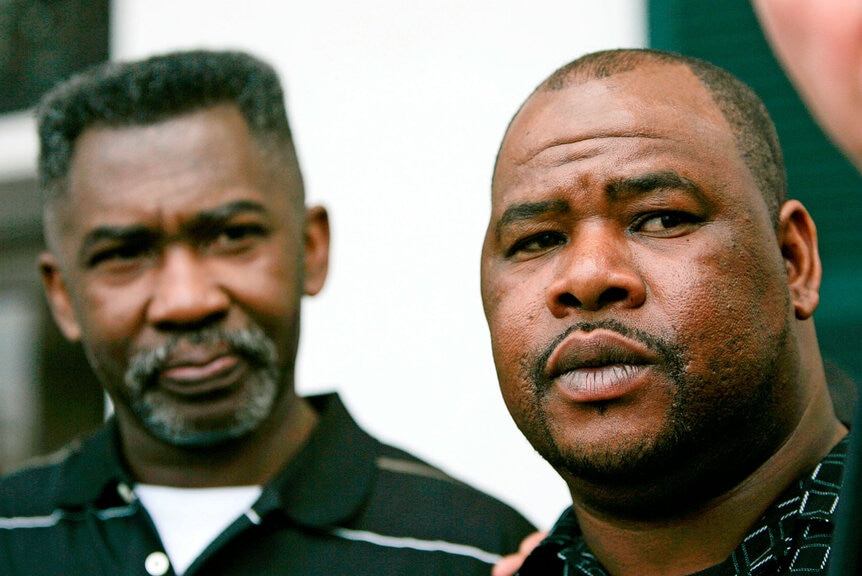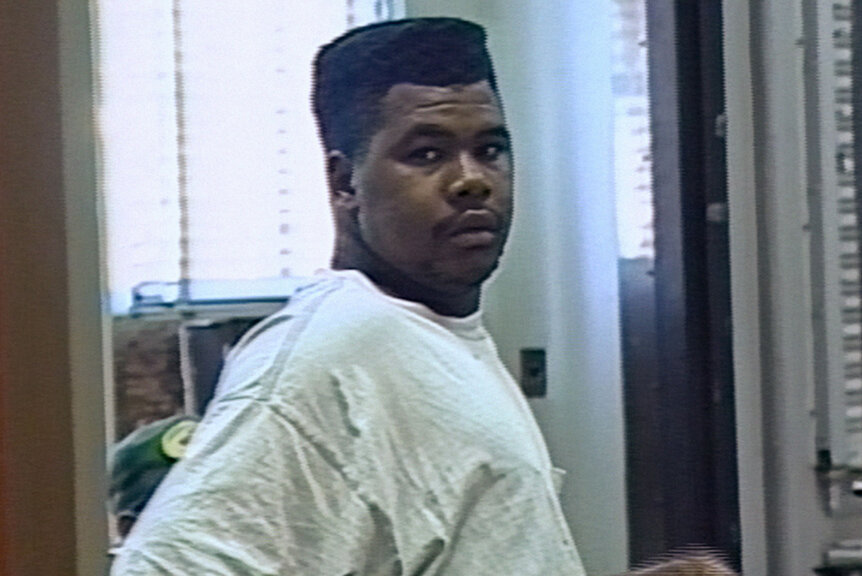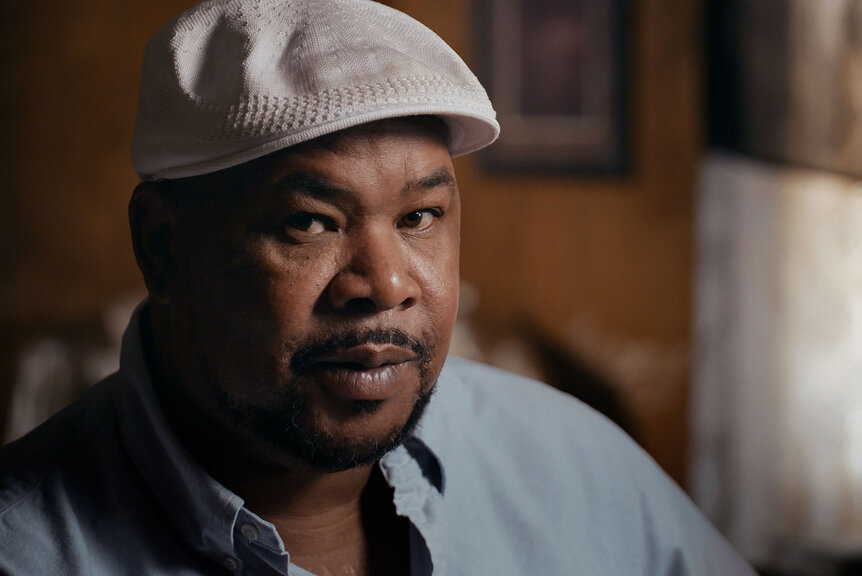Create a free profile to get unlimited access to exclusive videos, breaking news, sweepstakes, and more!
Who Are Levon Brooks and Kennedy Brewer, Who Were Both Wrongfully Convicted Of Killing 3-Year-Old Girls?
Levon Brooks and Kennedy Brewer spent a good chunk of their lives in prison after being convicted largely due to the controversial practice of bite mark analysis.

The murders of two 3-year-old girls in Noxubee County, Mississippi in the early 1990s sent shockwaves through the rural community. But the tragedy was compounded when two men were wrongfully imprisoned based on flawed investigations and dubious evidence, all while the real child killer remained on the loose.
Levon Brooks and Kennedy Brewer were both wrongly convicted of sexually assaulting and killing the child victims, who died 18 months apart and were found in separate bodies of water. Their cases are documented in Netflix’s “The Innocence Files.”
The new nine-episode docuseries aims to “expose difficult truths about the state of America’s deeply flawed criminal justice system,” a press release from the series states. It shows how The Innocence Project — a nonprofit legal organization devoted to exonerating wrongly convicted people — mobilizes in the hopes of correcting terrible injustices.
The cases of Brooks and Brewer kick off the series.
Levon Brooks
Brooks was working at a nightclub in 1990 when the 3-year-old daughter of Sonya Smith, a woman he'd dated on and off, was taken from her bed in the middle of the night and brutally sexually assaulted and killed.
Courtney Smith was abducted from her bedroom, which she shared with her sisters, in her Noxubee County home on Sept. 15, 1990. Two days after her abduction, her body was discovered in a pond just 80 yards from her house, according to the Innocence Project. What appeared to be a bite mark was found on her hand.
The only potential witness appeared to be her older sister, 5-year-old Ashley Smith, who was sleeping in the same bed. Ashley was interviewed by Robert Williams, who worked with the Lowndes County Sheriff's Office but was known primarily as a local television kids show personality named Uncle Bunky, who hosted a program where he'd draw animals and entertain children. According to an audio recording of the interview, Ashley claimed she saw a man come into the bedroom that night with a quarter in his ear. When Williams suggested the quarter might be an earring, Ashley agreed. That was later used to identify Brooks, who had an earring in his ear, as a potential suspect.
As the docuseries pointed out, however, Ashley's recollections varied widely – not surprising given her young age – and at different points she also offered that the kidnapper escaped in an airplane and said, “Na na na na na na, I’ve got your sister.”
Bite mark analysis — conducted by forensic odontologist Dr. Michael West — also pointed to Brooks as the culprit. Brooks was arrested and charged with capital murder.
Brooks’ defense maintained he was working at the club that night, and that dozens of people saw him.
But West testified at his 1992 trial that “it could be no one but Levon Brooks that bit this girl’s arm,” according to the Innocence Project. And prosecutors even put Ashley on the stand as the only eye-witness to the crime. Looking back on the experience, a now adult Ashley said in the series that she feels it was an unfair burden to have placed on her at such a young age.
Brooks was found guilty of capital murder and sentenced to life in prison. As he told the filmmakers, he spent much of his time behind bars reading the bible and making art. His drawings were often innocent: images of puppies and butterflies.
Kennedy Brewer
Four months after Brooks was sentenced, another 3-year-old girl in the same region was killed in an eerily similar way.
Christine Jackson was kidnapped from her home in Noxubee County during the wee hours of May 3, 1992. She had been sleeping near a broken window. Brewer, who was dating the girl's mother, Gloria Jackson, had spent the night at the home.
Two days after Christine vanished, her body was found in a creek 500 yards away from the home, according to the Innocence Project. She had been sexually assaulted and murdered. At least 19 marks on her body were initially attributed to human bite marks.
The house had been locked and there was no way Christine could have wandered off on her own. But investigators claimed there was no way an intruder could have gone through the window. Brewer became the number one suspect as a result. West again conducted bite mark analysis, which further pointed to Brewer as the killer. He claimed that bite marks found on Jackson were “indeed and without a doubt inflected [sic] by Kennedy Brewer.” By this time, however, West had already been suspended from the American Board of Forensic Odontology but the court allowed his testimony anyhow, according to the Innocence Project.
Dr. Richard Souviron, who brought bite mark analysis into the limelight after his testimony in the Ted Bundy trial, testified for the defense during Brewer's 1995 trial that West's analysis was completely flawed, and that the bites had actually come from animal predation: animals feeding in the creek.
Still, Brewer was convicted of capital murder and sexual battery on March 24, 1995, and he was sentenced to death.
Their exonerations
Brewer wrote to the Innocence Project in 2000 pleading, “I really need your help,” the docuseries showed. The nonprofit took on his case and, while doing so, took on Brooks’ case as well as they figured the cases were likely the work of the same killer. The two murders were just too much alike.
In 2005, the nonprofit went to Christine Jackson's home and concluded that someone could have easily abducted her through the broken window. They also hired an expert who conducted research that they say showed that the marks on her body were probably from crawfish in the creek and not inflicted by a person.
They then got their hands on the rape kit from Christine’s case, which still had enough of a semen sample to obtain a DNA profile from.
The Innocence Project also began looking into other possible suspects and they came across Justin Albert Johnson. He was actually brought in as a suspect during the Brooks case. At that point he had already been convicted of one home invasion sexual assault against an adult woman. Shortly after he was arrested, and subsequently released, he was arrested again for breaking into a home and attempting a sexual assault on another woman. His DNA was included, as was the DNA of other possible suspects, when the rape kit material was sent to a lab for retesting.
In 2007, the tests came back and excluded Brewer as Christine's rapist. Johnson, however, was a match. A year later, Johnson confessed to the murders of both Christine Jackson and Courtney Smith.
Brooks and Brewer appeared in court together in 2008 and were released from prison. By this point, Brooks had spent 18 years behind bars and Brewer had spent 15.
Brooks had tears in his eyes after the exoneration.
“God had been by my side,” he said. “He knew my heart. He knew what type of guy I was.”
Both said they forgave the mistakes made that put them in prison.
“I can't worry about the past,” Brewer said immediately after his exoneration. “All I can do is think about the future now."
Both were given a sum of $50,000 a year for 10 years as compensation.
Despite the DNA evidence and Johnson's confession, West remains fixed in his belief that both men had something to do with the girls' murders. He stood by the efficacy of his bite mark analysis, telling Oxygen.com that he still thinks both men bit each victim. He also contended that other evidence had come into play during the initial trials, not just his forensic analysis.
However, the exonerations raised serious questions about the reliability of bite mark analysis.
“Levon and Kennedy's cases were landmark cases for us,” Peter Neufeld, co-founder of the Innocence Project said in the docuseries. “We didn't have any real experience with bite marks until then.”
He said this case made him realize that this particular bite mark analysis incident wasn’t just a “bad apple.” It was the whole practice, according to him.
“We then made bite marks a super priority,” he said. The Innocence Project told Oxygen.com back in 2018 that that many people are falsely convicted because of bite mark analysis.
“Bite mark evidence represents everything that is wrong with forensic science in this country today,” Chris Fabricant, Director of Strategic Litigation for the Innocence Project told Oxygen.com at the time. “It’s grossly unreliable even under ideal circumstances and it has contributed to more wrongful convictions and indictments than any other technique that is still admissible by criminal trials today.”
Brooks passed away from cancer in 2018 at the age of 58. Before his death, he tended to chickens and continued his love for making art. He sold greeting cards and keychains featuring his work.
"I've always been strong in my life," he said shortly before his death, as shown in the docuseries. "What I'm going through, I'm gonna fight it with everything I've got."
Brewer wasn't available for an interview, according to a representative for the docuseries. They said he still lives in Mississippi. "The Innocence Files" shows him 11 years after his exoneration spending a lot of time with his family. He has been doing odd jobs like lawn-mowing with his brother. Neufeld said his compensation has stopped and he is ineligible for social security because he didn't work enough to qualify.
"It's very hard to find meaningful employment after being locked up for something you didn't do," he said.
























